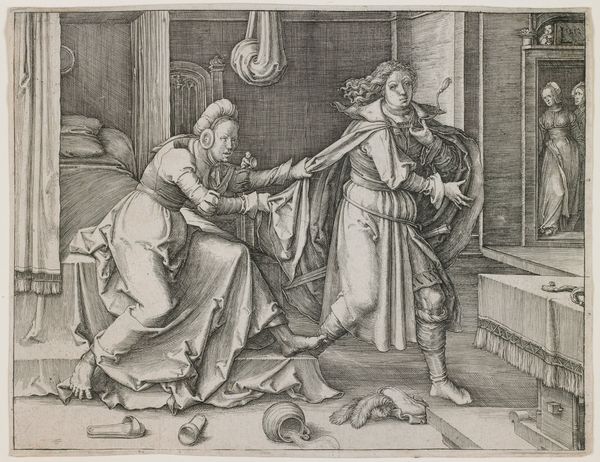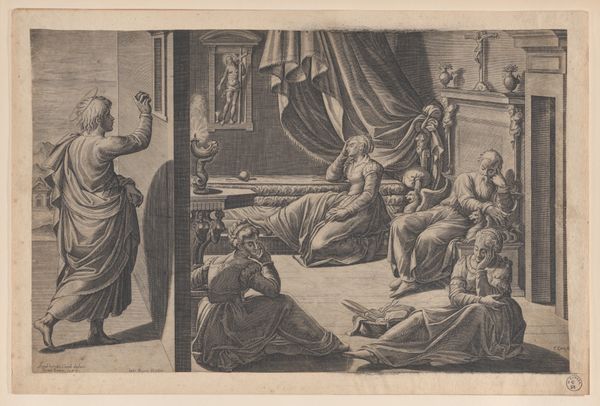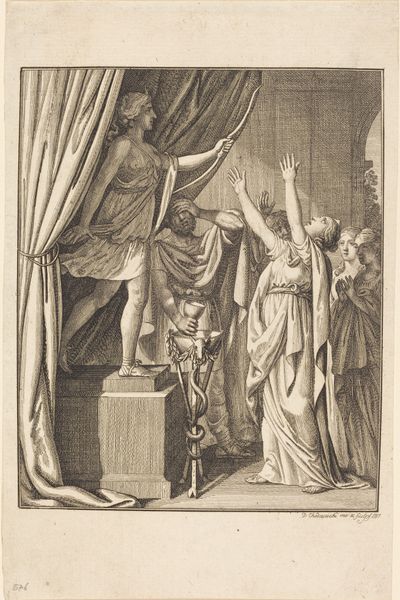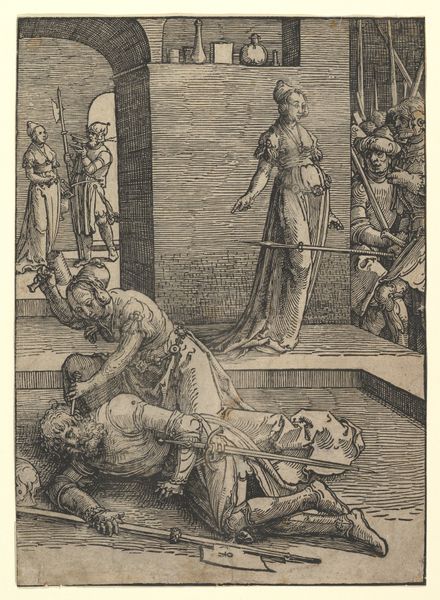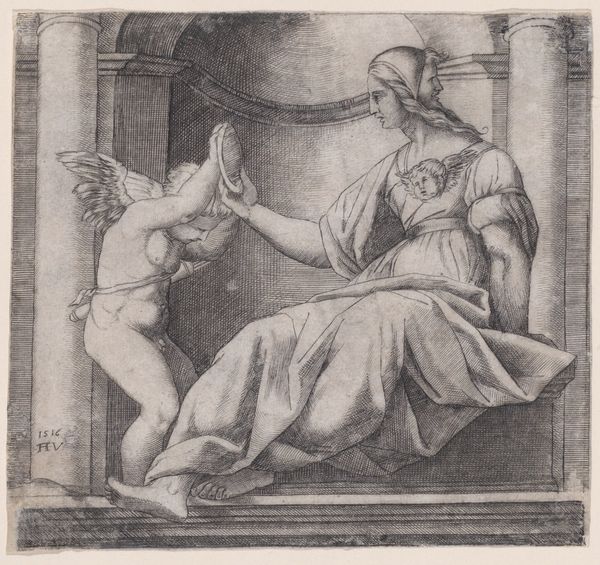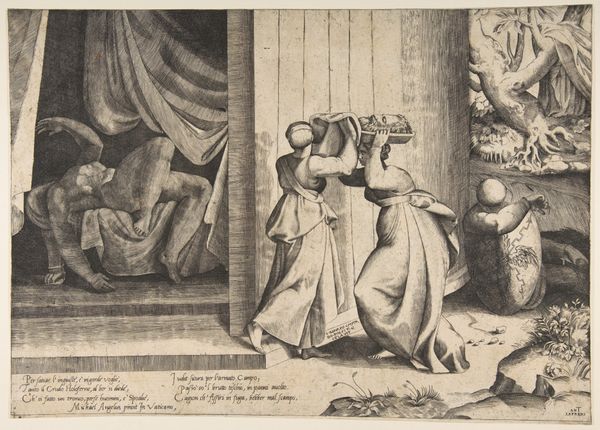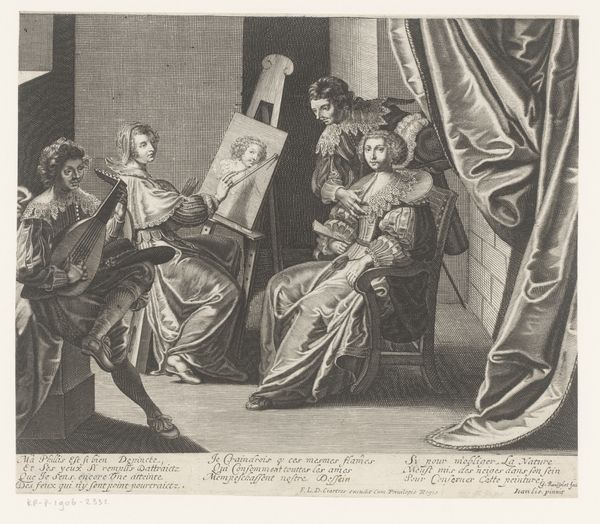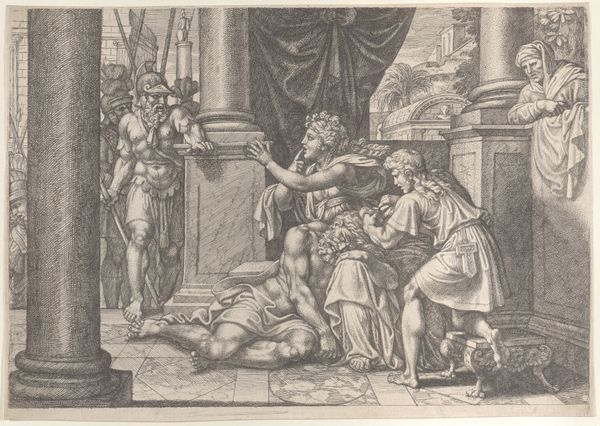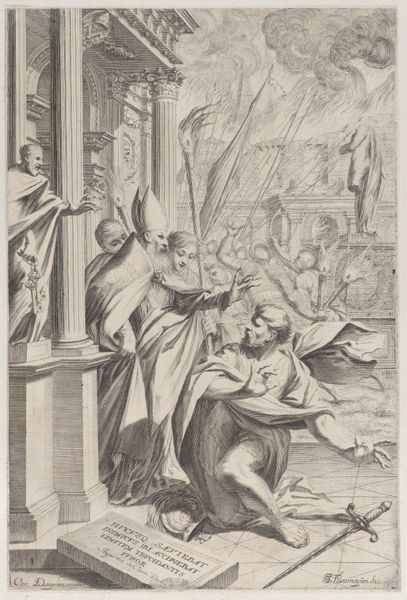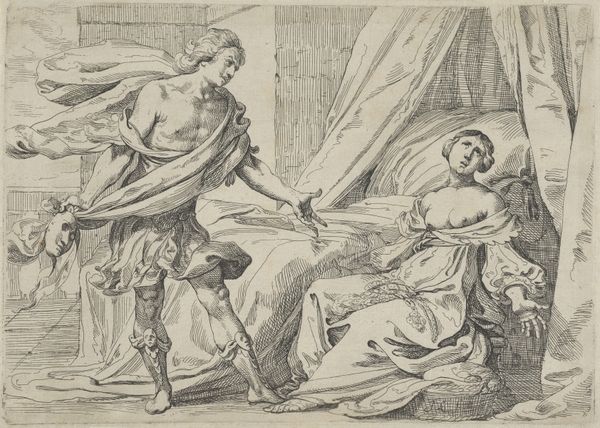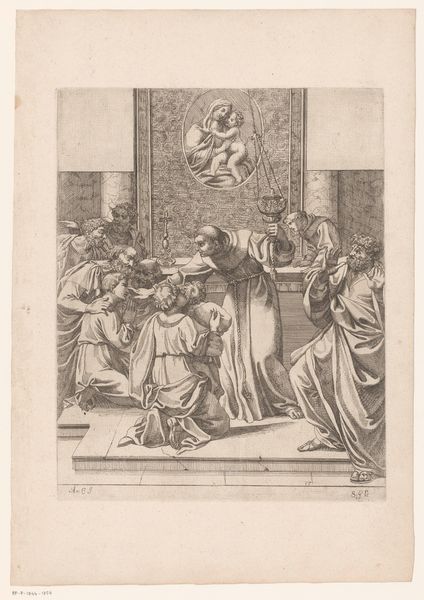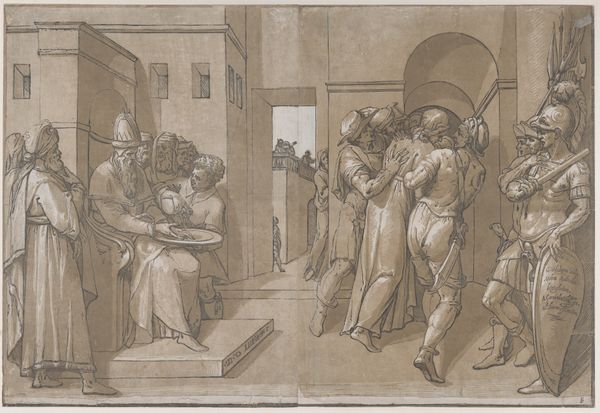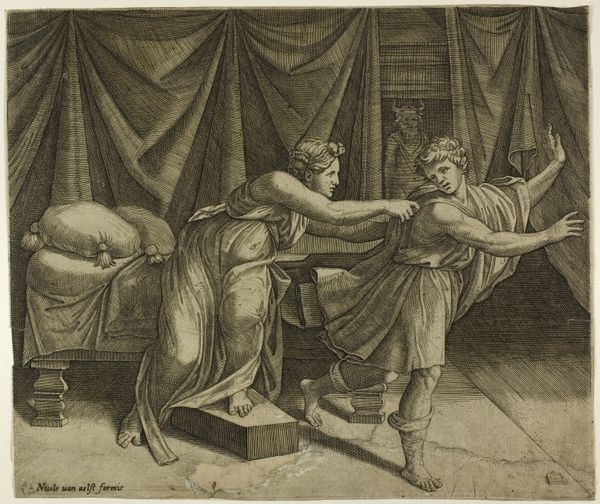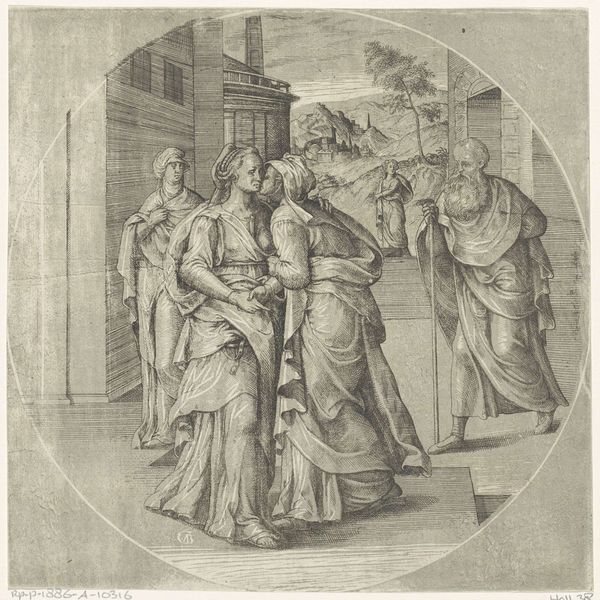
Judith giving the head of Holofernes on a platter, which is about to be covered with a cloth, to her servant, with the foreshortened, naked body of Holofernes at right 1546
0:00
0:00
drawing, print, engraving
#
drawing
#
narrative-art
# print
#
mannerism
#
figuration
#
geometric
#
men
#
portrait drawing
#
history-painting
#
italian-renaissance
#
nude
#
engraving
Dimensions: Sheet: 11 1/8 x 16 3/4 in. (28.3 x 42.6 cm)
Copyright: Public Domain
This print, made by Enea Vico in the mid-16th century, presents the biblical scene of Judith beheading Holofernes. But rather than paint, marble or gold, Vico used a humble sheet of paper and a burin, a steel tool used for engraving. The linear quality of the image comes from the slow, deliberate process of incising lines into a copper plate, which would then be inked and printed. Look closely, and you can almost feel the pressure of Vico's hand as he creates the scene. This emphasis on line and form is characteristic of engraving, where the material itself dictates the aesthetic. Engraving also had a social significance. As a relatively inexpensive medium, prints like this made art accessible to a wider audience. It was a reproductive medium, often used to disseminate the designs of others. Vico's skilled labor is evident in the precise rendering of the scene, which also served a broader purpose of distributing imagery in early modern Europe. The work invites us to consider how materials and processes can democratize art and shape cultural understanding.
Comments
No comments
Be the first to comment and join the conversation on the ultimate creative platform.
